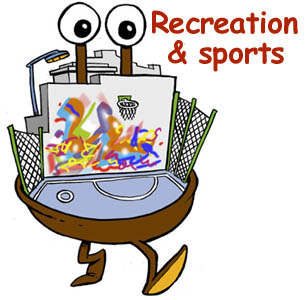 Recreation
and sports spaces Recreation
and sports spaces
From the 1930s, for the next 30 years, the socially redeeming, 'wilderness'
and reform aspects of parks gradually disappeared.
Their original purpose was forgotten and their design became demand-led
- perhaps influenced by the success of places like Cone Island, Brooklyn,
in providing amusement for the masses.
They tended to become places where sports and games were played, and
for this reason - and ease of maintenance - areas were often covered with
asphalt.
The suburbs expanded, cars intruded, bringing amusement arcades and bright
colours into American parks. Nature receded.
By the Sixties, when the middle classes had left the inner cities, parks
like NYC's Central Park were thought to be unsafe and neglected. A similar
process occured later in the UK, as the practice of 'contracting out'
by Local Authorities lowered maintenance standards.
It was time to reinvent parks.
To commission work of this nature, contact David Thorpe.
back to About David
© David Thorpe 2006 All Rights Reserved
|
Above: Coney Island 1924. Below: urban 'greyspace'.
"They took all the trees
And put them in a tree museum
And they charged all the people
A dollar and a half to see 'em
Don't it always seem to go
That you don't know what you've got
Till it's gone
They paved paradise
And they put up a parking lot"
Joni Mitchell, Big Yellow Taxi (1970)
--> accessible green spaces
--> home
|